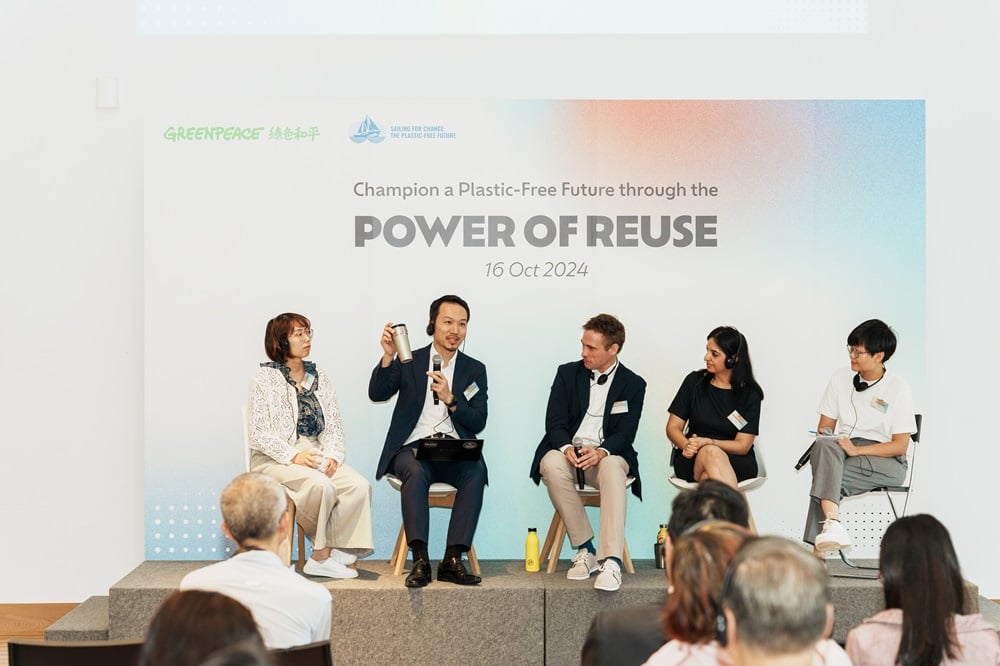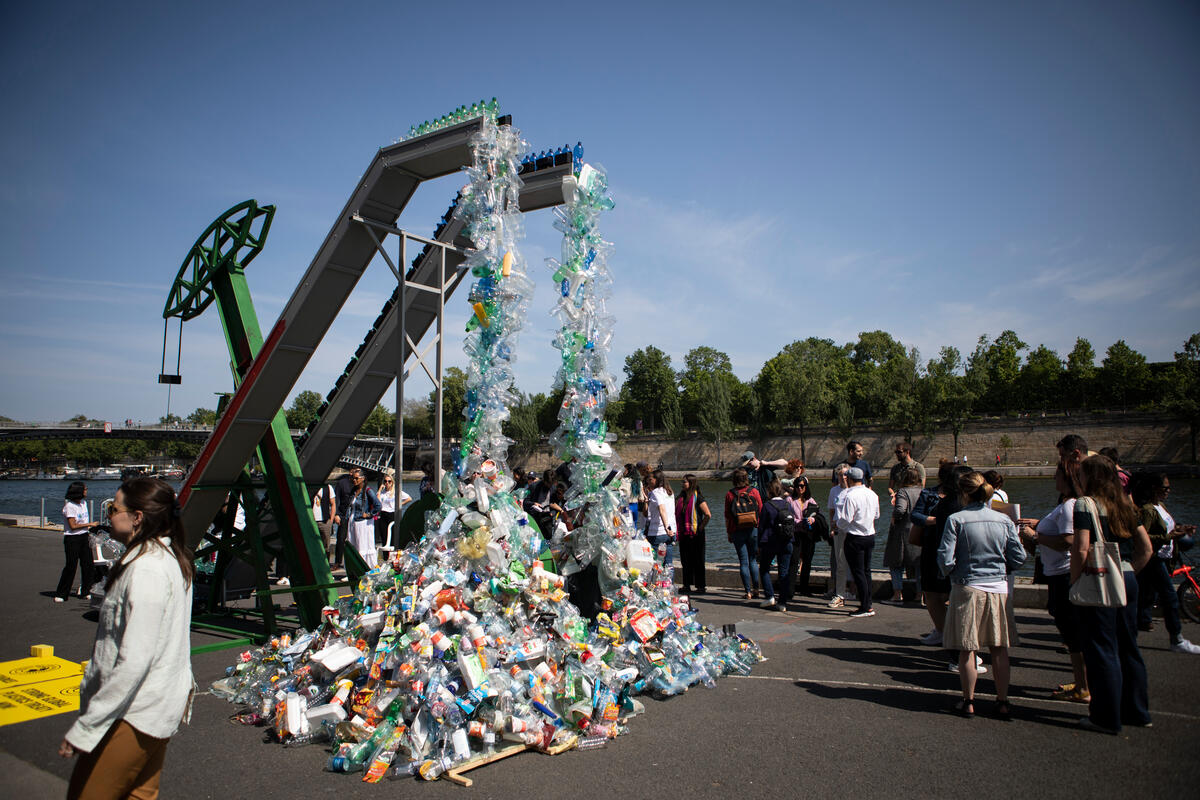23 August 2022, Taipei – Microplastics were detected in the feces of several protected species in Taiwan, including Formosan black bears and Formosan sambar deers, as well as in water collected from their habitats, showing that these protected species have been exposed to and are ingesting microplastics even in their natural environments, a study conducted by Greenpeace East Asia’s Taipei office revealed today.
Greenpeace East Asia’s Taipei office Plastics Campaigner Tang An said, “It’s hard to imagine just how badly polluted the food chains and habitat of protected species are, even those that are remotely located and live far from human activity or rarely interact with humans. This is a wake-up call – we should proactively face the threat of plastics and address this crisis at the source. Ocean and mountain cleanups or recycling are not enough to solve plastic pollution. One of the biggest problems lies in today’s large-scale throwaway plastic production by big corporations, and the lack of government actions to regulate them. We urge governments and big corporations to take swift and urgent action to address the plastics crisis immediately,” said Tang An, a plastics campaigner in Greenpeace East Asia’s Taipei office.
Greenpeace East Asia Taipei found microplastic in the feces of Formosan black bears (Ursus thibetanus formosanus), Formosan sambar deers (Rusa unicolor swinhoii), Kinmen Eurasian otters (Lutra lutra), yellow-throated martens (Martes flavigula), and leopard cats (Prionailurus bengalensis). All species are included in the Red List of Terrestrial Mammals of Taiwan, a designation for critically endangered, endangered, and vulnerable species. Microplastics were also found in water collected from the habitat of Formosan black bears, Formosan sambar deers, Kinmen Eurasian otters, and Formosan landlocked salmon (Oncorhynchus masou formosanus), as well as in samples of aquatic insect larvae, which are the primary food for Formosan landlocked salmon.
The researchers collected 112 feces samples from the five animal species. From these samples, a total of 604 microplastic pieces were found, at concentration levels even higher than that of domesticated cattle’s manure as documented in some studies, with fragments being the most common form (44.6%) followed by spherical fragments (40.0%) and fibers (14.4%); the sizes of the microplastics range between 10.0 micrometer and 1,333.3 micrometer [1]. Meanwhile, a total of 1,323 microplastic pieces were identified in the water samples, with spherical fragments being the predominant form (46.6%) followed by fragments (42.4%) and fibers (11.0%); the sizes of the microplastics range between 10.0 micrometer and 1,431.7 micrometer [2]. The test also revealed that microplastics were present in the habitat and food of Formosan landlocked salmon.
Scientists have warned that the problem of microplastics, which is already wreaking havoc on nature, will only get more severe. Plastics have been regarded as a threat not just to marine ecosystems and species, but to terrestrial and freshwater ecosystems as well. Microplastics are long-lasting and once they are in the environment, cannot be removed. They could carry and spread toxic substances, interacting with entire ecosystems, interfering with growth and reproduction, and impacting species through their food chains.
Greenpeace USA Global Plastics Lead Kate Melges said, “This latest study shows how widespread plastic pollution is – from our oceans to Arctic sea ice, and now even on land. Corporations, especially the biggest plastic polluters such as Coca-Cola, PepsiCo, Nestlé and Unilever, must stop packaging items in throwaway plastic packaging and urgently invest in refill and reuse. Governments must hold them accountable by adopting an ambitious, legally-binding global plastics treaty that addresses the full lifecycle of plastic, prioritize a production cap and phasedown on plastic production, and end single-use plastic.”
Notes:
English executive summary here.
Full report here.
[1] Of the five protected animal species examined, the feces of yellow-throated martens exhibit the highest concentration of microplastics (18.65 pieces/gram*), followed by Kinmen Eurasian otters (2.72 pieces/gram), leopard cats (1.64 pieces/gram), and Formosan black bears (1.13 pieces/gram), with Formosan sambar deers rounding out the list at the lowest concentration level (0.09 pieces/gram).
*dry weight of the feces sample
[2] From water samples collected from the five habitats, samples from Kinmen are found to contain the highest level of microplastic concentration (32.11 pieces/liter), followed by Wuling (26.11 pieces/liter), Jiaming Lake (20.14 pieces/liter), Luling Mountain (17.00 pieces/liter), with Dafeng rounding out the list (5.78 pieces/liter).
Media Contact:
Moffy Chen, Greenpeace East Asia Communications Manager, +886987060898, [email protected]
Tang An, Greenpeace East Asia Campaigner, +886937966188, [email protected]
Angelica Carballo Pago, Greenpeace USA Plastics Global Media Lead, +639498891332, [email protected]

-1.jpg)

